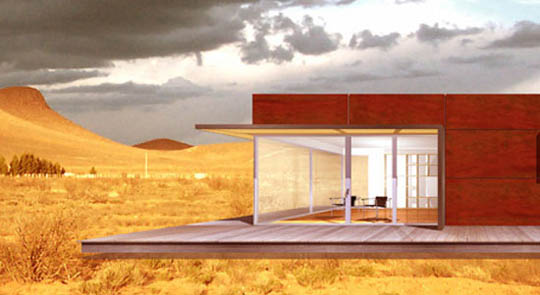Energy Efficient Homes
Energy Efficient Homes - live green and save
What is energy efficiency?
Energy efficiency means finding better and smarter ways to use energy resources and taking advantage of the highly efficient technologies now available. Increasing efficiency is the most cost-effective short-term approach to minimizing the impacts of long-term environmental concerns. The more energy efficient a building is, the less it costs to heat. A wide variety of improvements, such as a layer of insulation properly installed or single pane windows replaced with double pane ones, can improve the efficiency of a home.

How energy efficient is my home?
The ENERGY STAR Home Energy Yardstick (A web-based home-energy calculator) provides a quick measure of a home’s energy efficiency. It requires basic information: the homeowner’s zip code, the size of the house, the year it was built, and utility bill information. Once this information is entered, the energy calculator shows how a home performs energy-wise relative to comparable homes in the same location. Then, based on the home’s performance, a set of recommendations is provided for improving the home’s energy efficiency and lowering utility costs.
What are the basics of a DIY home energy audit?
A home energy audit covers several key areas: air leaks in the building envelope, adequacy of insulation, and efficiency of the heating and cooling systems.
- Air leaks: The first step is to identify and note where air is leaking and drafts are entering the home. Common air-leak locations include window frames and doors, ceiling hatches that lead into an attic, fireplace dampers, wall or window-mounted air conditioners, baseboards, and electrical switch plates and outlets. The potential energy savings from fixing these types of home air leaks ranges from a 5 percent to a 30 percent reduction in energy bills.
- Insulation: Many homes, depending on age, may have inadequate amounts of insulation. Heat loss through a home’s ceiling and walls could be quite large if the insulation levels are less than the recommended minimum. In homes with an attic hatch, the hatch should be weather-stripped and insulated as heavily as the attic.
The attic should have a vapor barrier under the attic insulation. The vapor barrier might be tar paper, craft paper attached to fiberglass bats, or be a plastic sheet. If there is no vapor barrier, the interior ceilings can be painted with vapor barrier paint. This reduces the amount of water vapor that can pass through the ceiling. Large amounts of moisture can reduce the effectiveness of insulation and promote structural damage.
Checking insulation levels in exterior walls is more difficult. Checking electrical outlet openings can provide a sense of how much insulation is in the wall cavity. Another approach is to make a small hole in a closet, behind a couch, or in some other unobtrusive place to check the filling of the wall cavity. Ideally, the wall cavity should be totally filled with some form of insulation material. Unfortunately, this method does not reveal whether the entire wall is insulated. To determine this only a thermographic image can provide the needed perspective.
Homes with unheated basements should have insulation under the living area flooring. An R-value of 25 is the recommended minimum level of insulation. If the basemen is heated, the foundation walls should be insulated to at least R-19. The water heater, hot water pipes, and furnace ducts should all be insulated.
- Heating and Cooling Systems: Heating and cooling equipment should be inspected annually or as recommended by the manufacturer. The filter in forced-air furnaces should be checked and replaced as needed. Generally, the filters should be changed every month or two, especially during periods of high usage. A professional should check and clean heating and cooling equipment once a year.
- Lighting: Quick and easy energy savings can be found by auditing a home’s lighting system. The higher the wattage of a light bulb, the more energy it uses. A 60- or 75- watt bulb might be fine where a 100-watt (or larger) bulb is being used. Using fluorescent tubes or compact fluorescent lamps (CFLs) can provide significant energy savings especially if they are replacing conventional incandescent bulbs.
Building an energy efficient home
The U.S. Department of Energy offers four programs at different levels of energy efficiency performance (all exceed standard requirements). These are a terrific choice for new home builders as recent surveys show that energy efficiency if the top upgrade home buyers choose in new homes.
- ENERGY STAR - qualified new homes are built to strict energy efficiency guidelines using proven technologies and construction practices. On average, these homes are 15 percent ore efficient than standard code. Approximately 10 percent of the U.S. new housing market consists on ENERGY STAR-qualified homes. ENERGY STAR is the largest energy certification program in the United States.
- Environments for Living® promote the next level up in home energy performance. This program, which includes a strict preconstruction plan review, offers homeowners limited guarantees on the heating and cooling portions of the their utility bills.
- The Department of Energy's Building America program offers builders and homeowners very high levels of energy performance. Building America, through cost-shared research and collaboration with leading homebuilders, has designed and constructed cost-effective homes that save 30 to 40 percent on annual utility bills compared to standard code homes.
- Fifty percent or greater reductions on utility bills can be achieved by combining highly efficient home designs and construction practices with solar electric and/or thermal systems. This type of home is an important milestone along the path to “net-zero energy homes.” The goal is to design and build homes with such high energy efficiency that their heating and cooling needs can be met through solar-based energy with little or no reliance on electricity from utilities. The Department of Energy envisions the building of cost-effective net-zero energy homes by 2020.
Source: US Department of Energy - Energy Efficient Homes




